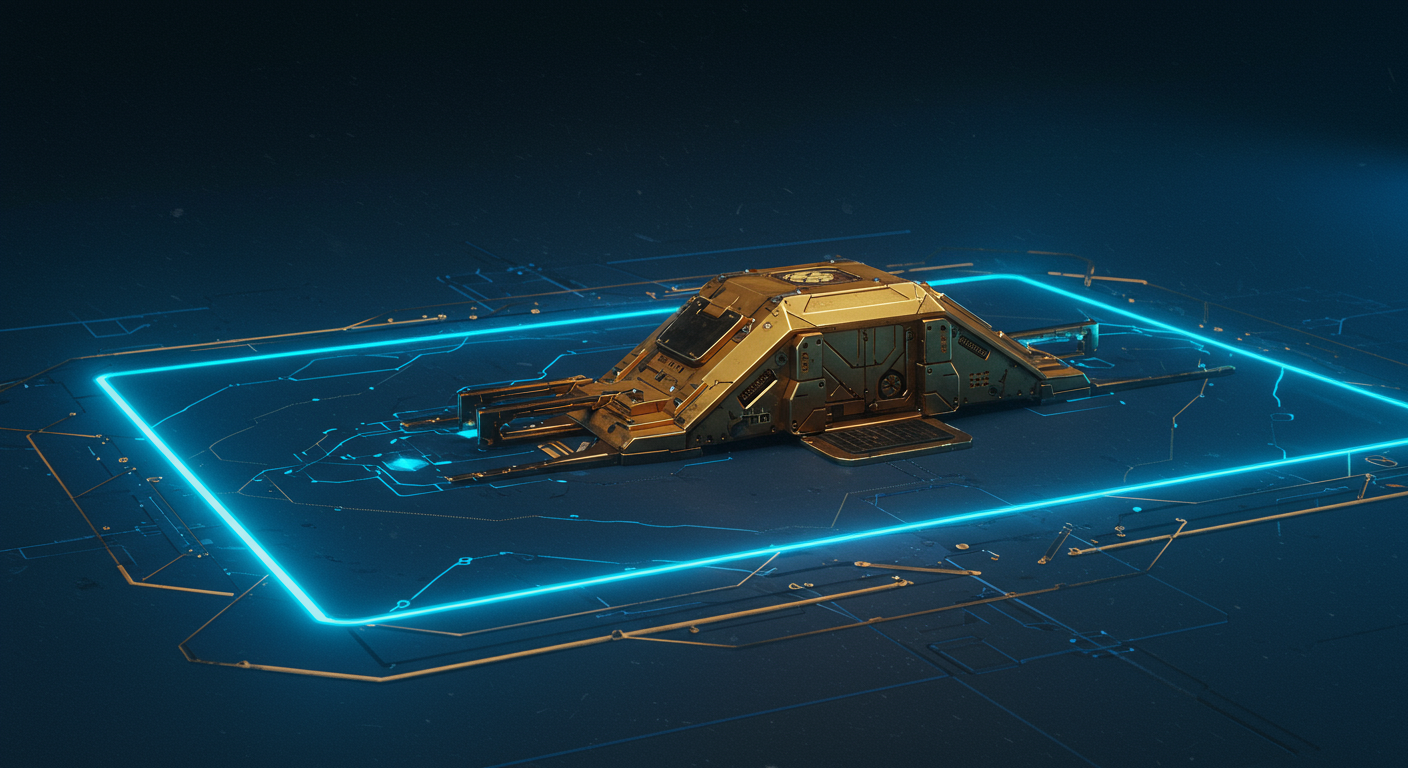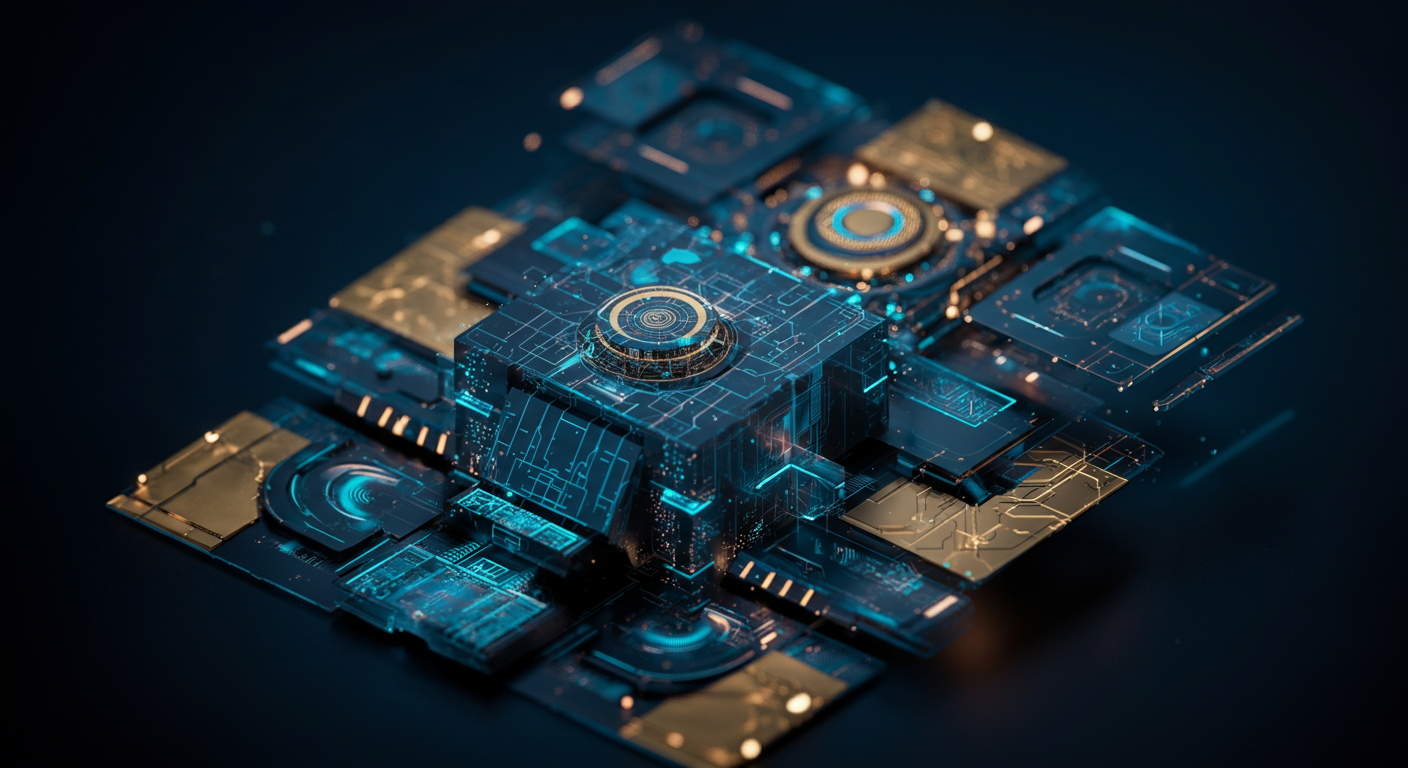DINOv3: Meta's Groundbreaking Computer Vision Model - A Deep Dive

DINOv3 stands ready to reshape computer vision as we know it, offering unparalleled capabilities.
The DINO Dynasty Evolves
Meta AI continues its self-supervised learning quest with DINOv3, the latest iteration of their groundbreaking model. Previous versions, DINO and DINOv2, paved the way, but DINOv3 offers significant advancements, especially in its capacity for zero-shot image classification and object detection.
Self-Supervised Learning: A Paradigm Shift
Traditional computer vision models require extensive labeled datasets, a costly and time-consuming process. Self-supervised learning turns this on its head, allowing models to learn from unlabeled data. DINOv3 leverages this by:
- Pre-training on Massive Unlabeled Datasets: Think of it as showing the AI countless images and letting it figure out the relationships between objects without explicit instructions.
- Emergent Properties: Through this process, DINOv3 develops an understanding of visual concepts that can be applied to new tasks without further training.
Open Source: A Gift to the AI Community
Meta AI’s decision to release DINOv3 publicly is a game-changer. It allows researchers and developers to leverage this powerful model for their own projects, accelerating innovation across the board.
Imagine the possibilities: faster medical diagnoses, more accurate autonomous vehicles, and smarter Design AI Tools.
Applications Across Industries
The potential applications of DINOv3 are vast, impacting various sectors:
- Healthcare: Assisting in medical image analysis for faster and more accurate diagnoses.
- Autonomous Vehicles: Improving object detection and scene understanding for safer self-driving cars.
- Retail: Enabling smarter inventory management and personalized shopping experiences.
- Scientific Research: Speeding up discoveries with improved data analysis.
One of the most striking aspects of DINOv3 is its elegant yet powerful architecture, allowing it to achieve state-of-the-art performance in computer vision.
The Core: Vision Transformers
At the heart of DINOv3 lies the Vision Transformer (ViT). Rather than processing images pixel-by-pixel, ViTs divide the image into patches and treat them as tokens, much like words in a sentence. This allows the model to leverage the power of transformers, initially designed for natural language processing, for image analysis. You can find more background information on AI Fundamentals to better understand how neural networks are the bedrock for these tools.Self-Attention: Capturing Context
A key element is the self-attention mechanism. This allows each patch to "attend" to all other patches, capturing contextual relationships across the entire image.Imagine attending a party. Instead of only talking to the person next to you, you can pay attention to everyone's conversations, understanding the overall dynamic of the gathering. That's self-attention.
- Mechanism: Determines relationships between different parts of the image.
- Role: Enables the model to understand the context and relationships within the visual data.
- Impact: Improves the model's ability to identify objects and patterns accurately.
Training and Data
DINOv3 utilizes a self-supervised training approach, eliminating the need for large labeled datasets. It was trained on vast amounts of unlabeled images, allowing it to learn rich feature representations without explicit human guidance. This approach aligns with the growing trend towards unsupervised learning in AI. To better understand these advanced techniques, consider consulting our AI Explorer resource.Novel Self-Supervision Techniques
- Contrastive Learning: DINOv3 uses contrastive learning, where the model learns to distinguish between different views of the same image (e.g., different crops or color augmentations) and different images altogether.
- Distillation: The model employs a knowledge distillation technique, where a student network learns from a teacher network, improving performance.
DINOv3 vs. Other Models
| Feature | DINOv3 | Traditional CNNs |
|---|---|---|
| Architecture | Vision Transformer (ViT) | Convolutional Neural Networks (CNNs) |
| Training | Self-Supervised | Supervised |
| Context Handling | Global Context via Self-Attention | Local Context via Convolutions |
In essence, DINOv3's architecture, with its transformer-based approach and innovative self-supervision, allows it to learn powerful and generalizable visual representations, pushing the boundaries of computer vision AI. You can even explore how AI can be used for Design AI Tools for image generation and editing.
High-resolution image features generated by DINOv3 unlock a new level of detail for computer vision tasks, much like improving the resolution of our own eyes.
How DINOv3 Achieves High-Resolution Image Features
DINOv3, a self-supervised computer vision model, doesn't rely on labeled data to learn powerful image representations. Instead, it uses a technique called "self-distillation with no labels," learning from the images themselves. The model is trained to match features extracted from different "views" of the same image, achieving impressive feature quality without manual annotation. Think of it like learning to recognize a friend from different angles and lighting conditions, without needing someone to point them out.Advantages for Computer Vision Tasks
The benefits of high-resolution image features in computer vision are considerable.- Improved Object Detection: More detailed features allow for more precise localization and identification of objects within an image. Imagine trying to identify a specific bird species; higher resolution features capture subtle plumage details that would otherwise be missed.
- Enhanced Semantic Segmentation: High-resolution features provide a finer-grained understanding of image content, leading to more accurate pixel-level classification.
- Superior Image Classification: Detailed features enable the model to differentiate between similar categories with greater confidence.
Performance and Visual Examples
DINOv3 significantly outperforms previous models in various benchmarks. Consider, for example, that DINOv3's features reveal finer details in complex scenes compared to its predecessors, allowing for better segmentation and object recognition. Check out some resources about AI Explorers to see more examples of impressive AI tasks.DINOv3’s ability to generate high-resolution image features represents a significant leap forward, driving improved performance across a broad spectrum of computer vision applications, and opening new possibilities for AI-driven solutions in areas like robotics, autonomous driving, and medical imaging. Want to see which other tools can help with design? Check out the Design AI Tools.
DINOv3 isn't just another algorithm; it's a paradigm shift, and its real-world impact is rapidly unfolding.
DINOv3: Beyond the Lab, Into Reality
DINOv3, Meta's self-supervised computer vision model, is making waves because it learns directly from images without needing manual labels. For the uninitiated, Meta AI provides a wealth of information on the tool. Its ability to identify and understand visual patterns positions it for widespread adoption across various sectors. Here's a glimpse:- Autonomous Driving: Imagine vehicles that can not only "see" the road but also understand complex scenarios with nuanced object recognition thanks to design AI tools. DINOv3 empowers safer and more reliable self-driving systems.
- Medical Imaging: DINOv3 can assist in identifying subtle anomalies in medical scans, potentially leading to earlier and more accurate diagnoses. The real-world applications of DINOv3 in healthcare, particularly in analyzing X-rays and MRIs, are accelerating.
- Robotics: Robots equipped with DINOv3 can perform intricate tasks, from sorting objects in warehouses to assisting in surgical procedures, enhancing precision and efficiency.
From Inspection to Creation
Beyond object recognition, DINOv3 is also revolutionizing creative workflows:- Image Retrieval: Finding similar images becomes incredibly efficient, useful for tasks like reverse image search and content recommendation.
- Visual Inspection: Manufacturing processes benefit from DINOv3's ability to detect even the smallest defects in products, ensuring higher quality control.
- Content Creation: Artists and designers can leverage DINOv3 for generating novel designs and visual content, pushing the boundaries of creativity.
Ethical Considerations: A Necessary Pause
"With great power comes great responsibility," and DINOv3 is no exception.
We need to be mindful of potential biases in the data used to train DINOv3. These biases, if left unchecked, could perpetuate unfair or discriminatory outcomes. It’s crucial to address these ethical considerations proactively to ensure responsible AI development and deployment.
In short, DINOv3 is not merely a research project but a catalyst for real-world innovation, demonstrating how advances in computer vision are opening new doors in seemingly disparate fields. Let’s see what other industries it can transform; maybe you, a software developer looking for new ideas using software developer tools can build the next groundbreaking implementation.
Benchmarking DINOv3: Performance and Comparison with Other Models
Forget chess; today's AI contenders battle in the arena of computer vision, and DINOv3 is showing some serious muscle. Let's dissect how it stacks up.
DINOv3's Performance on Key Datasets
DINOv3's pre-training allows it to achieve high accuracy on various downstream tasks. Think of it as a highly educated polyglot who can quickly pick up new languages.
- ImageNet: DINOv3 shows competitive results on ImageNet classification. It demonstrates strong feature extraction capabilities, meaning it can 'see' and categorize objects effectively.
- COCO: For object detection and segmentation, DINOv3 performs impressively. It precisely identifies and delineates objects within complex scenes, paving the way for more sophisticated applications.
DINOv3 vs. The Competition

How does this newcomer fare against established champions like CLIP, ViT, and Swin Transformer?
DINOv3 really shines in zero-shot scenarios, where it can perform tasks without prior training on the specific task. That gives it a leg up on some supervised approaches.
Here’s a quick comparison:
| Model | Strengths | Weaknesses |
|---|---|---|
| DINOv3 | Strong zero-shot performance, efficient self-supervised learning | Can be computationally intensive during initial pre-training |
| CLIP | Excellent text-image alignment, robust to distribution shifts | Requires paired text-image data |
| ViT | High accuracy with sufficient data, parallel processing-friendly | Can be data-hungry; requires large datasets for optimal performance |
| Swin Transformer | Hierarchical structure handles varying scales effectively, efficient computation | More complex architecture can be harder to implement and fine-tune |
Strengths, Weaknesses, and Trade-offs

DINOv3 isn’t perfect, but it brings distinct advantages to the table:
- Strengths: Robust feature learning, strong performance with less labeled data, potential for transfer learning.
Computational cost is always the elephant in the room. Accuracy often comes at the expense of processing power and memory. DINOv3 aims to strike a better balance, making it a more accessible option for researchers and practitioners. For a comprehensive list of AI tools, consider visiting a reliable AI tool directory. Such directories help users locate tools tailored to specific needs.
In conclusion, DINOv3's strong performance, particularly in zero-shot learning, makes it a noteworthy advancement in computer vision. While it has its trade-offs, its capabilities are poised to push the boundaries of AI applications, opening new possibilities for AI enthusiasts and experts alike. Next, let’s consider real-world applications of DINOv3.
DINOv3 isn't just another computer vision model; it's a paradigm shift, and you're about to get hands-on.
Accessing DINOv3: The Starting Line
Meta has made DINOv3 accessible through various channels, including their research repository. But before you dive into the code, let’s get the lay of the land:
- Official Repository: The primary source for code, documentation, and pre-trained models.
- Hugging Face Hub: Many pre-trained DINOv3 models are available on Hugging Face. This makes integration into existing pipelines simpler.
- Cloud Platforms: Check if your preferred cloud platform (AWS, GCP, Azure) offers pre-built DINOv3 containers or services.
Code Examples and Tutorials
Here’s a snippet in PyTorch, showcasing how to load a pre-trained DINOv3 model:
python
import torch
model = torch.hub.load('facebookresearch/dinov2', 'dinov3_large')
model.eval()
Remember, the specific model name ('dinov3_large' here) might vary. Refer to the official documentation for the exact names.
For a more comprehensive guide, check out tutorials on Learn AI Fundamentals.
Hardware and Software: Gear Up!
DINOv3, being a powerful model, has certain requirements:
- Hardware: A GPU with sufficient memory (at least 16GB is recommended for larger models) is crucial for reasonable inference speeds.
- Software: Ensure you have Python (3.7+), PyTorch (1.10+), and the necessary CUDA drivers installed.
Optimizing and Fine-Tuning: Beyond the Basics
Want to push DINOv3 even further for how to use DINOv3 for object detection or other specific tasks? Consider these tips:
- Quantization: Reduce the model's size and improve inference speed.
- Knowledge Distillation: Train a smaller, faster model to mimic the behavior of DINOv3.
- Fine-tuning: Adapt the pre-trained model to your specific dataset for optimal performance. For fine-tuning advice, consult the Learn AI in Practice guides.
The pace of innovation in self-supervised learning is accelerating, pushing the boundaries of what AI can achieve without explicit labels.
Beyond DINOv3: Emerging Trends
DINOv3 made waves by achieving impressive image understanding with minimal human guidance. But the future? Think:- Multi-Modal Learning: Combining vision with other senses like audio or text. Imagine an AI that understands a scene not just by seeing it, but also by "hearing" the sounds within it. Tools like ElevenLabs already excel at AI voice generation; integrating them with vision models could unlock richer contextual understanding.
- Continual Learning: AI that adapts and learns from new data without forgetting previous knowledge. This tackles a key limitation: current models often need retraining to incorporate new information.
- Increased Efficiency: Reducing the computational cost of training and inference. We need smaller, faster models deployable on edge devices. Consider tools like Runway, focused on creative AI workflows, which benefit directly from efficiency gains.
AGI and the Role of Self-Supervision
Self-supervised learning is a critical piece of the AGI puzzle because it allows AI to learn vast amounts of information from the real world without relying on meticulously labeled datasets."The problem isn't getting the AI to do tasks it's told to do. It's getting it to understand what needs to be done, and learning it independently."
Challenges and Limitations
The future of self-supervised learning in AI isn't without its hurdles. Here are a few limitations:- Bias: Self-supervised models can amplify biases present in the training data.
- Computational Resources: Training these models is still expensive. Democratizing access to compute is critical.
Keywords
DINOv3, computer vision, self-supervised learning, image features, Meta AI, state-of-the-art AI models, vision transformers, high-resolution images, AI model training, object detection, semantic segmentation, zero-shot learning, transfer learning, generative AI, foundation models
Hashtags
#DINOv3 #ComputerVision #SelfSupervisedLearning #MetaAI #ArtificialIntelligence
Recommended AI tools
ChatGPT
Conversational AI
AI research, productivity, and conversation—smarter thinking, deeper insights.
Sora
Video Generation
Create stunning, realistic videos and audio from text, images, or video—remix and collaborate with Sora, OpenAI’s advanced generative video app.
Google Gemini
Conversational AI
Your everyday Google AI assistant for creativity, research, and productivity
Perplexity
Search & Discovery
Clear answers from reliable sources, powered by AI.
DeepSeek
Conversational AI
Efficient open-weight AI models for advanced reasoning and research
Freepik AI Image Generator
Image Generation
Generate on-brand AI images from text, sketches, or photos—fast, realistic, and ready for commercial use.
About the Author

Written by
Dr. William Bobos
Dr. William Bobos (known as 'Dr. Bob') is a long-time AI expert focused on practical evaluations of AI tools and frameworks. He frequently tests new releases, reads academic papers, and tracks industry news to translate breakthroughs into real-world use. At Best AI Tools, he curates clear, actionable insights for builders, researchers, and decision-makers.
More from Dr.

